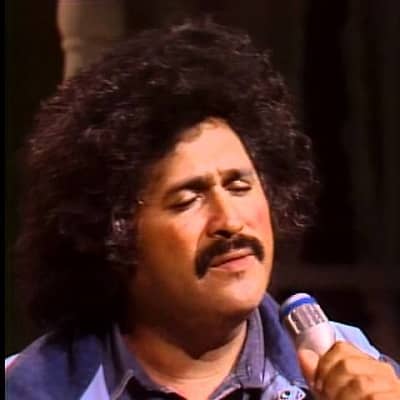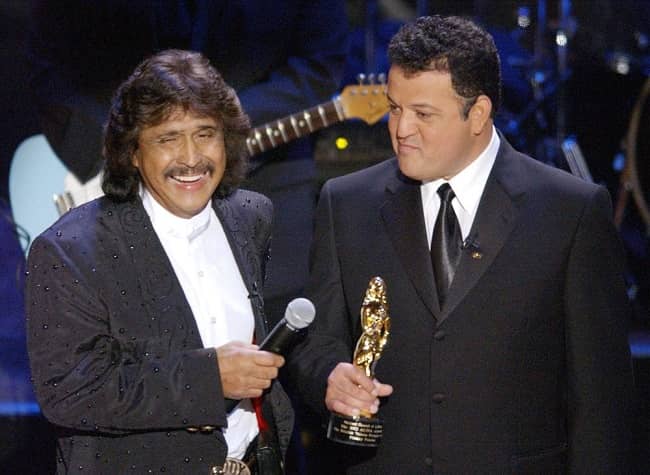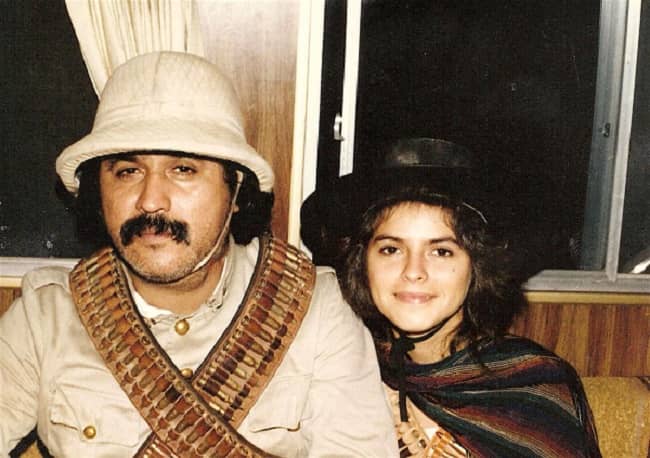Table of Biography
Freddy Fender was a popular American musician. Freddy Fender was well-known for his work as a solo artist and with the bands Texas Tornados and Los Super Seven.
Early Life and Childhood
Freddy Fender was born Baldemar Garza Huerta on June 4, 1937, in San Benito, Texas, U.S. His age was 70 years old at the time of his death. He was born to his father Serapio Huerta and his mother Margarita Garza. Likewise, he held American nationality and was of a Mexican-American ethnic background. According to his birthdate, he was born under the zodiac sign Gemini.
He performed on the radio for the first time at age 10 on KGBT in Harlingen, Texas, singing the hit song “Paloma Querida.” In 1953, Fender left high school at the age of 16, and at the age of 17, he enlisted in the U.S. Marine Corps for three years. Because of his drinking, he frequently spent time in the brig. In August 1956, he was court-martialed and discharged with the rank of private (E-1). Fender claims that he later received a letter from the U.S. Department of the Navy stating that he had been wrongfully given a general discharge due to his alcoholism.
More…
Moreover, he went back to Texas and performed in honky-tonks, bars, and nightclubs all over the South, mostly for Latino crowds. El Bebop Kid, as he was then known, released two songs in 1957 that had a mediocre amount of success in Mexico and South America: Spanish translations of Harry Belafonte’s “Jamaica Farewell” and Elvis Presley’s “Don’t Be Cruel” He also released “Tu Fro Corazón” (“Your Cold Heart”), a cover of Hank Williams’ “Cold, Cold Heart,” in Spanish.
In addition to his cool persona as Eddie con Los Shades, he became well-known for his rockabilly music. His name was legally changed from Baldemar Huerta to Freddy Fender in 1958. He chose the name Fender in honor of the guitar and amplifier as well as Freddy because it rhymed well and would “sell better with Gringos!” After that, he moved to California.
Initial Success
The blues ballad “Wasted Days and Wasted Nights” was released by Fender in 1959. His original song became popular, but in May 1960, after being imprisoned in Baton Rouge, Louisiana, for marijuana possession along with a band member, he found himself in legal trouble. He was released from the Louisiana State Penitentiary after serving almost three years there thanks to the efforts of the governor at the time, Jimmie Davis, a songwriter, and musician. As a condition of his release, Davis demanded that Fender stay away from music while on suspension.
Later Years
Texas Tornados
Fender founded the Texas Tornados in 1989 with fellow Tex-Mex musicians Doug Sahm, Flaco Jiménez, and Augie Meyers. The group’s music successfully fused conjunto, Tejano, R&B, country, and blues to great acclaim. Fender brought his band to the Texas Tornados’ Warner Bros. Records audition because he didn’t think the band was strong enough. He played country music, which was not what the executives were looking for, so the audition was almost a failure. The executives wanted some classic rock and blues songs, and after convincing Fender to play them, he was given a record contract.
Fender admitted that he was unsure whether joining a group after being a solo act was a good idea, but he “just wanted to record for a major label.” The group released four albums, and in 1990 the song “Soy de San Luis” earned the group a Grammy Award for Best Mexican American Performance. “You’ve heard of New Kids on the Block?” Fender said when describing the band. We are the Old Guys in the Street, after all. After Sahm passed away, the Tornados’ output decreased. One of the group’s three live appearances on Austin City Limits from 1990 was made available in 2005 as part of the Live From Austin, Texas, series.
One of the group’s three TV appearances on Austin City Limits in 1990 was broadcast live and included in the Live From Austin, Texas, series, which was released in 2005.
Los Super 7
Fender joined another supergroup called Los Super Seven in the late 1990s, which also included the members of Los Lobos, David Hidalgo and César Rosas, Flaco Jiménez, Ruben Ramos, Joe Ely, and the singer Rick Trevino. For their self-titled album, the group won a 1998 Grammy in the Mexican-American Performance category.
Later Work
In 2001, Fender released his final studio album, La Msica de Baldemar Huerta, a collection of traditional Mexican boleros that earned him a third Grammy in the Latin Pop Album category. When Fender performed Mexican standards at that stage of his career, Joe Reyes, who collaborated with Fender on a Texas Folklife and Austin tribute album titled “Fifty Years of Freddy Fender,” said of the album: “When he did Mexican standards at that point in his career, I expected it to be good because he’s a perfectionist. But that album is so beautifully produced, and his voice is flawless. I was so happy to see him returning to his roots.
Death and Legacy
Fender was falsely declared dead by Billboard on March 13, 2001. He mocked the error in the magazine. He received a kidney transplant from his daughter in 2002 and a liver transplant from a different donor in 2004. However, his condition only got worse. He had tumors on his lungs and was afflicted with an “incurable cancer”.
Fender attended the dedication of a $1.4 million water tower in San Benito on June 5, 2005. When traveling east on U.S. Route 83 through San Benito, one can see the tower, which features an image of Fender and the words “San Benito Hometown of Freddy Fender.” Fender gave his final performance and started chemotherapy on December 31, 2005. At his Corpus Christi, Texas, home on October 14, 2006, he passed away from lung cancer at the age of 69, with his loved ones by his bedside. In his hometown of San Benito, he was laid to rest.
Moreover, he expressed his desire to be the first Mexican American to receive an induction into the Country Music Hall of Fame in an interview with the Associated Press in 2004. On November 17, 2007, San Benito welcomed the opening of The Conjunto Music Museum and The Freddy Fender Museum. The San Benito Historical Museum and they are housed in the same building. His family continues to support Fender’s fundraising efforts and administers the Freddy Fender Scholarship Fund.
Film Credits
Fender portrayed a small-town mayor in The Milagro Beanfield War, which Robert Redford directed in 1988. He played Tony in Robert M. Young’s 1977 film adaptation of the Miguel Pinero play Short Eyes, which was set in a prison. In 1979’s She Came to the Valley (later released as Texas in Flames), Fender also played Pancho Villa. Based on the book by Cleo Dawson, Albert Band directed the motion picture. In a The Dukes of Hazzard episode, Fender made a cameo appearance as himself.
Personal Life
Freddy Fender was a straight-gender person. As for his marital status, he was a married man. He had tied the knot with Evangelina Muniz in 1957. But after Fender’s release from jail, the couple got divorced. The two later remarried in 1976, however, as life took a turn. They were blessed with four kids who are named Baldemar Huerta Jr., Tammy Loriane Huerta, Marla Ann Huerta Garcia, and Daniel Huerta.
Freddy Fender – Net Worth 2024
This veteran musician had earned a hefty amount of money throughout his career. He had a net worth of between $1 million and $5 million at the time of his death. However, he hadn’t shared his salary and other asset values.
Social Media
Talking about his social media presence, he was only active on Instagram. His Instagram account ‘@freddy.fender’ has more than 1.6K followers and has shared 73 posts. However, he wasn’t active on other social media sites like Facebook, Twitter, YouTube, and so on.
Freddy Fender – Body Measurements
Reflecting on his physical stats, he had a wonderful body personality. Freddy Fender stood at a height of 5 feet 10 inches. But there were no details about his weight, body size, dress size, shoe size, chest size, and so on. But looking at his pictures we can predict that he had a pair of black eyes with black colored hair.




